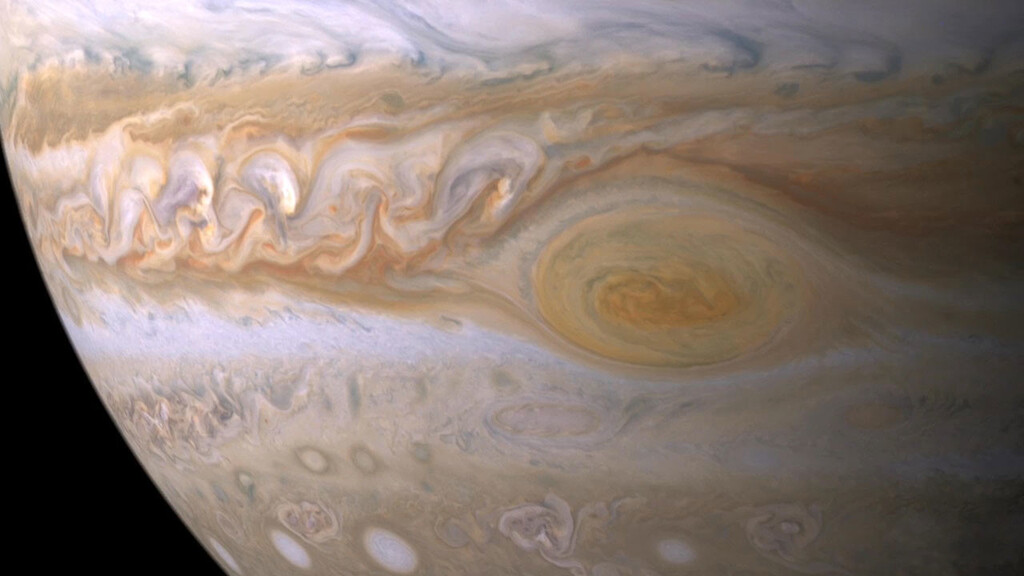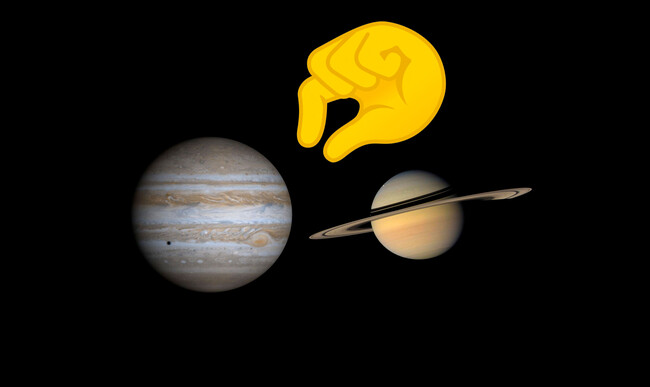It is not the only remarkable proximity that we will have this year, because Jupiter and Saturn will align as they have not done since the Middle Ages. Since last month we have been enjoying seeing a point in the night sky glow a little closer to red: Mars was as close to Earth as it will not be in 15 years.
If we are to observe the sky, we will know that the Red Planet is relatively easy to identify by that faint red reflection of its brightness especially these weeks, but both Jupiter and Saturn have been showing themselves very well for a few months (more to the west) . And in the coming weeks we will be able to see this gas giant and its neighbor aligned ** in a way that hasn’t happened since 1226 **.
An almost Christmas event

We will still have to wait a bit, because it will be on the night of December 21 when Jupiter and Saturn appear closer to Earth, aligned in what is known as a great conjunction and that is an effect of perspective (since in reality between them will be about 800 million kilometers).
Patrick Hartigan, an astronomer at Rice University (in Houston, Texas, USA) explained that alignments between these planets are rare and that they occur approximately every 20 years. But he clarified that this conjunction is “exceptionally rare” due to the proximity of the two planets.
So rare that according to Harigan something like this had not happened since March 4, 1226 . In fact, to see another similar conjunction we will have to wait until 2080, or until the year 2400 (at 2080 some of us get lucky -and arthritis-, but at 2400 it will be somewhat more complicated).
The special thing about this Great Conjunction is that in addition to being very close to each other, we will see that the visual distance between them will be a fifth of the diameter of a full moon, seeing them as a kind of “double planet” : in fact, it is estimated that they will reach be only 0.1 degree away. In Naukas they pointed out that it will surely be difficult to distinguish between them at first glance due to their proximity, in addition to proposing a follow-up exercise of this approach that can be interesting and entertaining.
Tips for observing the Great Conjunction
Fortunately, the event will be visible from anywhere on the planet (obviously without a cloudy sky), although it will be best seen near the equator. According to Harigan, the pair of planets will begin to appear in the west around an hour before sunset, and the further north of the Earth you are, the less time of conjunction will be seen.

In AstroAfición they advise looking for a place with a clear southwest horizon , because the stars will be low and any element (tree, mountain, building, etc.) could hide the event from our view. The ideal is to find out about the time of sunset (there are apps that do it quite successfully, such as PhotoPills for iOS and Android or Lumy for iOS, or the Gaisma website ).
Planets can be observed with the naked eye like stars, differing fundamentally in that their brightness does not flicker (they reflect the sunlight like a mirror like the Moon without being a huge ball of fire, as in the case of stars). But we can always help ourselves with instruments to see them closer. By pulling binoculars, the two darkest bands within the disk that the planet forms can be seen, and we may even see small points corresponding to its satellites ( Europa , Io, Ganymede and Callisto).
There are mobiles with night modes capable of capturing quite successful photographs in the case of those optics (especially if we have a small tripod or stand), such as the Pixel and its astrophotography mode or the latest Huawei with a successful night photography and an enviable zoom (such as the Huawei P40 Pro + ). Although it will be more difficult to get details than in a professional camera and above all it will be convenient to move away from the lights of the city.
The ideal of course is that we take a telescope (Harigan said that with this instrument the satellites will be seen quite well) and / or some more advanced photographic equipment to take advantage of the occasion. On this, in Engadget foto we recommend full-format equipment and objectives such as 10-24 mm, 11-16 mm in APS-C or 12-24 mm in full format, depending on the field of view we need. And be it camera or mobile, as we said the tripod.
In fact, as we also advise to observe supermoons for astronomical observations, it is advisable to go to places away from urban centers to avoid light pollution as much as possible, and the higher the better. In addition, to guide us on the star map and locate what we are interested in in the sky, there are many apps available to locate planets, constellations and stars that are usually very easy to use (but better to have them already downloaded and working).
The truth is that the occurrence of these phenomena this year is in a way a breath of fresh air. Even with restriction measures (which may exist and should be respected), it may be possible to go out to a point far from the urban area to be able to make observations and in the case of planets, if we do not want to take photographs and others, they look good even with city Lights. So it can be an incentive in these times of masks and entertainment with conditions.
Image | Jupiter ( NASA / JPL ) and Saturn ( NASA / JPL / Space Science Institute )